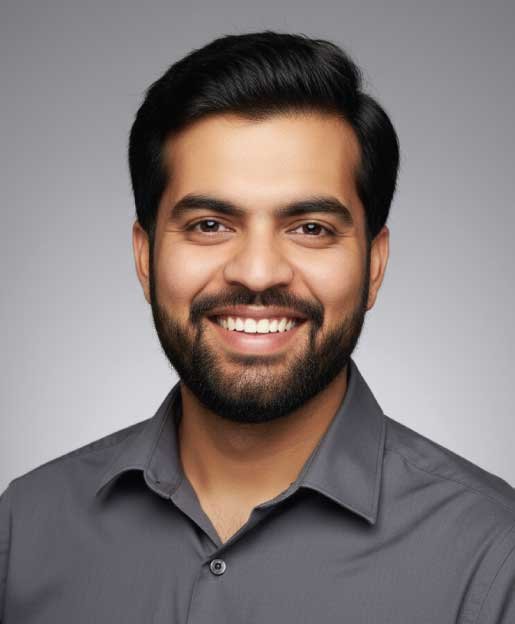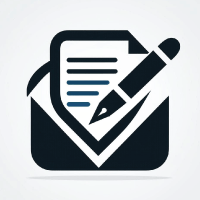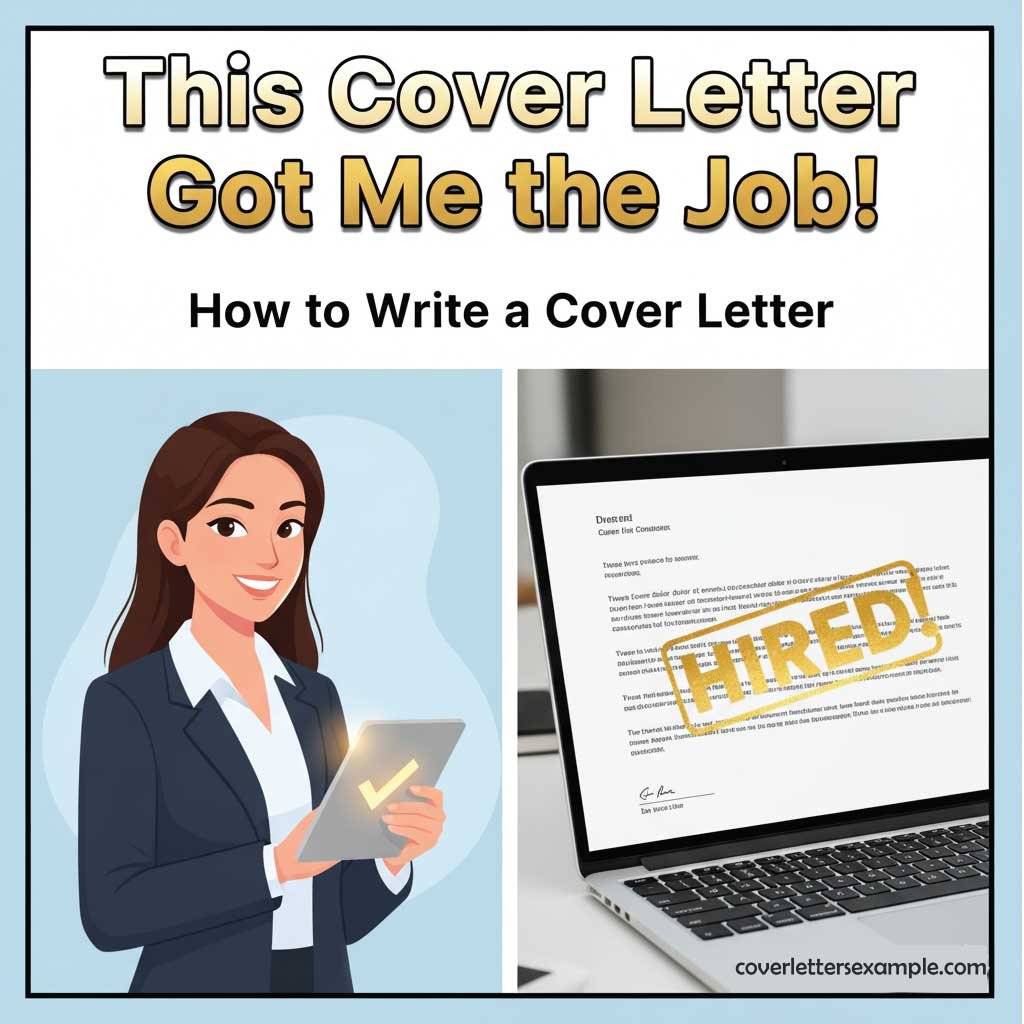When you are applying for a job, your resume tells what you’ve done — but your cover letter tells who you are. It’s the personal side of your professional story — your first impression before an employer even meets you.
Unfortunately, most people treat it like a boring formality. They copy templates, paste buzzwords, and hope for the best. But if you want to stand out in a sea of applicants, you need a cover letter that feels human, not robotic — one that connects your story to the company’s goals.
In this post, we will break down how to write a cover letter step-by-step, share real-world tips, and show you how to turn your experiences into words that get noticed.
Understand What a Cover Letter Really Does
Before you start writing, let’s get one thing clear — a cover letter is not a summary of your resume. It’s a bridge between your experience and the company’s needs.
Think of it this way:
Your resume says “Here’s what I’ve done.”
Your cover letter says “Here’s why it matters for your company.”
It’s your chance to:
-
Show genuine enthusiasm for the job.
-
Highlight your most relevant skills.
-
Give context to your achievements.
-
Prove you understand the company’s goals.
In short, your cover letter makes you memorable.
2. Research Before You Write
A great cover letter always starts with research.
Don’t just send a generic “Dear Hiring Manager” letter. Spend 15 minutes exploring:
-
The company’s website — check their mission and recent projects.
-
The job description — identify key skills and responsibilities.
-
The company’s tone — formal, creative, or friendly?
💡 Pro Tip:
If the job post lists the hiring manager’s name, always address them directly. For example:
“Dear Ms. Collins,” feels far warmer than “To whom it may concern.”
This small detail can make a big difference.
3. Start with a Strong, Personal Opening
The first paragraph decides whether they keep reading. So skip the boring stuff like:
“I am writing to apply for the Marketing Assistant position at your esteemed company.”
Instead, try something natural, personal, and confident:
“When I came across your opening for a Marketing Assistant at GreenTech Solutions, I immediately felt drawn to it — especially because of your company’s passion for sustainable innovation.”
Notice how this line does three things:
-
Mentions the exact role.
-
Shows the applicant knows the company.
-
Feels personal and human — not copied from a template.
That’s how you grab attention.
4. Tell Your Story (Briefly and Relevantly)
Your second paragraph should connect your experience to the job requirements. This isn’t the place to list everything you’ve done — that’s your resume’s job. Instead, focus on 2–3 key achievements that match the job.
Example:
“In my previous role at Bright Media, I led a campaign that increased client engagement by 30% in three months. I learned how to use creativity and data together — a skill I’m excited to bring to your digital marketing team.”
It’s specific, shows impact, and ties your skill to their needs.
Remember: hiring managers want to know what you can do for them, not just what you’ve done.
5. Show Why You’re Excited About Them
Most applicants make the mistake of talking only about themselves.
Instead, spend one paragraph showing that you understand — and care about — the company.
Something like:
“What excites me most about working at EcoHome is your focus on affordable green living. I admire how your team combines technology with community impact — and I’d love to contribute to that mission through thoughtful marketing strategies.”
This shows passion, alignment, and genuine interest — three things that catch attention fast.
6. Keep Your Tone Conversational (But Professional)
The best cover letters sound like a real person talking — polite, confident, and clear.
Avoid overly formal language or jargon.
Don’t say:
“I hereby submit my candidacy for the aforementioned position.”
Say instead:
“I’m excited to apply for this role because it aligns perfectly with my skills and long-term goals.”
You want the reader to feel like they’re getting to know you.
A conversational tone builds trust — and trust leads to interviews.
7. End with a Confident Closing
Your final paragraph should leave a positive impression. Thank them for their time, express enthusiasm, and invite further discussion.
For example:
“Thank you for taking the time to review my application. I’m truly excited about the possibility of joining your team and contributing to your next chapter of growth. I’d love the opportunity to discuss how my skills can help your company reach its goals.”
And then sign off professionally:
-
Best regards,
-
Kind regards,
-
Sincerely,
Followed by your name and contact info.
8. Format Matters More Than You Think
A messy letter can ruin a good message. So make sure your formatting is clean:
-
One page only (ideally 3–4 paragraphs).
-
Use readable fonts (Arial, Calibri, or Times New Roman, 11–12 pt).
-
Leave enough white space between sections.
-
Align everything neatly.
And always save and send your file as PDF (unless the job posting asks for Word format). It keeps your formatting intact.
9. Customize for Every Job
Never send the same letter twice. Recruiters can tell instantly when it’s a copy-paste job.
Each cover letter should:
-
Mention the company name.
-
Reflect the tone of their job post.
-
Match your skills to their exact needs.
💡 Think of your cover letter as a mirror.
It should reflect them — not just you.
10. Keep It Short, Honest, and Real
Finally, remember: authenticity wins.
Don’t exaggerate. Don’t use fancy buzzwords you can’t back up.
Instead, use real examples and natural language.
Employers read hundreds of letters. The ones that stand out are written by people who sound genuine.
“I’m not an expert at everything, but I love learning fast and solving problems creatively — especially when it means helping a team succeed.”
That line sounds human, humble, and confident — exactly what recruiters love.
Your Complete Guide with Examples and Real-World Tips
Now that you understand the basics of what a cover letter should say, it’s time to talk about how to put everything together — from layout to tone. This section will help you structure your letter like a pro, avoid common mistakes, and even adapt it for different career levels or job types.
Let’s get started.
1. The Perfect Cover Letter Structure
A cover letter doesn’t have to be complicated. Think of it as a simple, one-page story with a beginning, middle, and end.
Here’s the ideal structure:
🧩 A. Header
Your contact information should go at the top:
Keep it clean and aligned to the left. If you’re emailing your letter, you can skip the address part and just start with “Dear [Hiring Manager’s Name].”
🧩 B. Opening Paragraph — The Hook
This is your first impression. Start with:
-
The job title you’re applying for.
-
Where you found the job posting.
-
A line that connects you to the company.
Example:
“When I read about the opportunity to join BlueSky Agency as a Social Media Coordinator, I instantly knew it was a great fit. I’ve followed your campaigns for years, and I love how you mix creativity with purpose.”
This shows enthusiasm and awareness.
🧩 C. Second Paragraph — Why You’re a Great Fit
Now, link your experience to the company’s needs.
“Over the past two years, I’ve managed digital campaigns that boosted client engagement by 40%. I specialize in storytelling and brand voice — exactly what BlueSky’s campaigns are known for.”
Always use specific results (numbers, achievements, impact).
🧩 D. Third Paragraph — Why You Want Them
This part proves that you’re not just applying randomly.
“What excites me most about this role is BlueSky’s focus on creativity with social impact. I believe in using design and media for positive change, and I’d love to grow in a team that shares that vision.”
This paragraph shows that you care about their mission, not just the paycheck.
🧩 E. Final Paragraph — Call to Action
End confidently, but politely.
“I’d love the opportunity to discuss how my skills and ideas can contribute to your future campaigns. Thank you for considering my application — I look forward to hearing from you.”
And sign off with:
Sincerely,
Your Name
That’s it — clear, natural, and warm.
2. Example: A Professional Cover Letter
Here’s a short example that brings everything together 👇
Example — Marketing Assistant Cover Letter
Dear Ms. Peterson,
When I saw your posting for a Marketing Assistant at BrightLeaf Media, I felt immediately drawn to the opportunity. I’ve admired your company’s creative approach to digital storytelling and the way you use data to drive meaningful campaigns.
During my previous role at Nova Advertising, I helped manage projects that increased client engagement by 35% within six months. I love working with both analytics and creativity — from designing social media content to tracking campaign performance. My ability to merge design with strategy makes me confident I could contribute to BrightLeaf’s continued growth.
Beyond the numbers, what inspires me about BrightLeaf is your focus on authentic storytelling. I’ve always believed that great marketing connects people, not just products — and that’s exactly the energy your work gives off.
Thank you for taking the time to review my application. I’d be thrilled to bring my passion and experience to your team. I look forward to the chance to discuss how I can help BrightLeaf reach new audiences.
Best regards,
Daniel Moore
3. Common Cover Letter Mistakes to Avoid
Even a strong candidate can lose out if the cover letter feels rushed or generic. Here are some mistakes you should avoid:
❌ 1. Copying from a Template
Hiring managers read hundreds of cover letters — and they instantly spot a copied one.
Always rewrite in your own voice. Use templates only for structure, not for wording.
❌ 2. Making It All About You
Your goal isn’t just to say “I want this job,” but “Here’s how I can help your company succeed.” Focus on the company’s needs, not only your achievements.
❌ 3. Using Overly Formal Language
Avoid robotic phrases like “I wish to express my interest in…”
Keep it conversational but respectful.
❌ 4. Repeating Your Resume
Your cover letter should add context, not repetition. Highlight the “why” behind your experiences — what you learned, achieved, or can offer next.
❌ 5. Typos and Poor Formatting
One small typo can ruin your credibility. Proofread carefully and make sure your layout looks clean and consistent.
4. How to Tailor Your Letter for Different Situations
Every applicant is different — so your tone should match your level of experience and the type of job.
Here’s how to adjust 👇
💼 For Students or Entry-Level Applicants
Focus on potential, not experience.
Show what you’ve learned in school, projects, or volunteer work.
“As a recent graduate with a degree in Business Management, I’m eager to apply my classroom knowledge to real-world challenges. My internship at Swift Logistics taught me how to manage schedules and communicate effectively across teams.”
Even if your experience is limited, your enthusiasm and willingness to learn can stand out.
🧠 For Experienced Professionals
Focus on results and leadership.
“Over my five years as a Senior Accountant, I’ve helped streamline reporting processes, reducing monthly close times by 20%. I’m now looking to bring that efficiency mindset to a team like yours.”
Numbers, outcomes, and problem-solving always impress.
🌍 For Remote or Freelance Roles
Highlight your self-discipline and communication skills.
“Having worked remotely for the past three years, I’ve developed strong time-management habits and an ability to stay productive without constant supervision. I enjoy collaborating through digital tools and delivering consistent, high-quality results.”
Remote jobs value independence and reliability — show both.
5. How to Make Your Cover Letter and Resume Work Together
Your cover letter and resume should feel like a team, not duplicates.
Here’s how:
-
Mention your key achievements briefly in your letter, then expand in the resume.
-
Use the same tone and formatting style for both.
-
Let your letter show your personality, and your resume show your skills.
💡 Think of it this way:
Your resume earns attention through facts.
Your cover letter earns trust through feelings.
Both are equally powerful when done right.
6. A Quick Checklist Before Sending Your Cover Letter
Before you hit “Send,” take 2 minutes to check these points:
✅ Have you mentioned the correct company name and job title?
✅ Did you proofread for typos and grammar mistakes?
✅ Does your letter sound human and genuine?
✅ Is it customized for this specific job?
✅ Did you end with a clear, confident closing?
If you can tick all five boxes, you’re ready.
7. Pro Tips to Make Your Cover Letter Stand Out
Let’s wrap up with a few final, practical tips that can make a big difference:
⭐ 1. Add a Personal Touch
If you have a genuine connection with the company — mention it.
Maybe you’ve used their product or admired their values.
⭐ 2. Use Action Verbs
Instead of “I was responsible for,” say “I led,” “I created,” or “I improved.”
These verbs show ownership and confidence.
⭐ 3. Match the Company’s Energy
If it’s a creative agency, be lively. If it’s a corporate job, stay professional.
Your tone should feel like you already belong there.
⭐ 4. Keep It Brief
One page only. Recruiters spend about 30 seconds scanning — make every sentence count.
⭐ 5. Follow Up (Politely)
If you don’t hear back after a week or two, send a short, polite email expressing continued interest. It shows initiative without being pushy.
Final Thoughts — Write Like You are Talking to a Person
The best advice for writing a cover letter is simple: be human.
Don’t write for a computer or an algorithm.
Write for a person sitting behind a desk — someone who wants to know if you’d fit their team.
A great cover letter isn’t about perfection. It’s about connection.
If your words reflect honesty, enthusiasm, and professionalism, you’ll already be ahead of most candidates.
“Your resume shows what you’ve done.
Your cover letter shows who you are.
And that’s what makes employers remember you.”
So take a deep breath, open that blank document, and start writing your story — one sentence at a time.
You’ve got this. 💪

I am Engineer Hassan Ch, a professional content creator with a strong focus on career development and effective writing. My expertise lies in crafting clear, impactful cover letters, templates, and writing guides that help job seekers stand out. I am passionate about creating authentic, easy-to-follow content that turns complex ideas into simple, practical steps for success.

